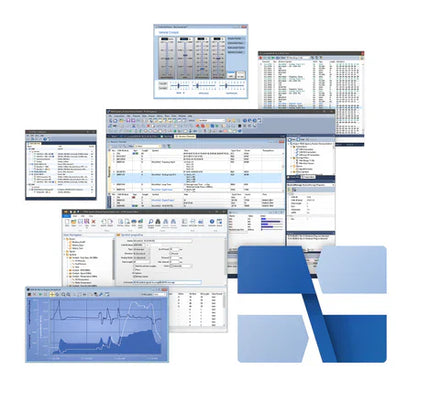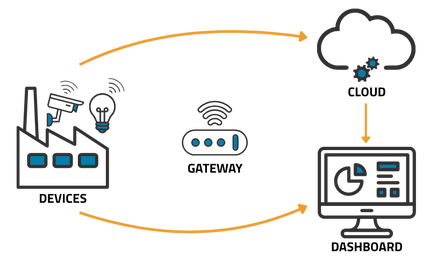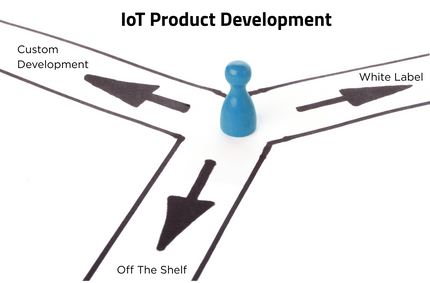For engineers working in automotive, heavy machinery, or industrial automation, the differences between CAN FD and Classic CAN (CAN 2.0) aren’t just technical, they’re mission-critical. Choosing the wrong protocol can lead to data bottlenecks, compatibility issues, or even system failures. As today’s applications demand faster communication, larger data payloads, and seamless integration with modern ECUs (Electronic Control Units) and sensors, knowing when, and why, to use CAN FD over Classic CAN can make or break your design. Whether you're upgrading legacy systems or building next-gen equipment, this comprehensive guide will equip you with the knowledge to choose the right protocol (and the right products), with confidence.
A Brief History of CAN and the Rise of CAN FD
The original CAN 2.0 A/B standard was introduced in 1993, designed to meet the communication needs of embedded control systems with limited data loads and moderate speed requirements. For more than two decades, it served as the backbone for industrial and automotive networks.
However, as vehicles and machinery became more electronically complex - between 1990 and 2000, the number of in-vehicle bus nodes went from about 10 nodes to more than 40 systems - the limitations of CAN 2.0 began to surface. Engineers needed a protocol that could handle:
-
Larger payloads without increasing message traffic
-
Faster update cycles for high-resolution sensor data
-
More efficient data communication for diagnostics and monitoring
What Is CAN FD? (And Why It Matters Now)
Enter CAN FD (Flexible Data-Rate), the next evolutionary step in the CAN (Controller Area Network ) protocol, standardized under ISO 11898-1. CAN FD was specifically created to overcome the limitations of CAN 2.0 - particularly its restricted payload size and lower data rates.
Key Benefits of CAN FD:
-
Transmits up to 64 bytes of data per frame (vs. 8 bytes for CAN 2.0)
-
Achieves data rates up to 8 Mbps with Bit Rate Switching (BRS)
-
Maintains backward compatibility with many Classic CAN devices
These features make CAN FD ideal for applications that require high-resolution sensor data, firmware updates over the network, and fast communication between controllers.
"What is CAN FD?" Simply put, it’s a faster, more efficient version of CAN that is ready for today’s data-hungry applications.
CAN FD vs. CAN 2.0: Key Differences
Understanding the differences between CAN FD and CAN 2.0 is critical for making informed design decisions. Here’s a quick comparison:

This is more than a spec sheet update. By transmitting up to 8x the payload at higher speeds, CAN FD unlocks applications that were previously too bandwidth-constrained for CAN 2.0.
"What is the difference between CAN and CAN FD?" It's mainly speed, payload, and protocol flexibility. But the impact is transformational.
Compatibility & Integration Guidance
One of the biggest advantages of CAN FD is that it plays well with your existing CAN 2.0 infrastructure. You don’t have to rip and replace. Instead, CAN FD enables a phased upgrade path - preserving legacy investments while opening the door to higher speed and payloads where needed.
That said, seamless integration doesn’t happen automatically. Here are a few key considerations when deploying CAN FD in mixed or transitional environments:
-
Mixed-node networks: CAN FD devices can communicate on the same bus as CAN 2.0 devices, but only using the Classic CAN format. FD messages (with larger payloads and faster bit rates) will be ignored by legacy nodes that don’t support them.
-
Bit rate strategy: Every CAN FD message begins at the standard CAN speed for arbitration, ensuring compatibility. But once control of the bus is established, the data portion can ramp up, assuming the hardware supports Bit Rate Switching (BRS).
-
Bandwidth planning: High-speed CAN FD traffic can increase bus load. Without proper planning, bursts of data may disrupt legacy timing expectations. Balancing message size and frequency is critical to maintaining system reliability.
-
Hardware readiness: To take full advantage of CAN FD, especially BRS, you may need to upgrade transceivers, MCUs, or controllers. The good news: the wiring typically stays the same.
Whether you're upgrading a factory floor, fine-tuning a vehicle network, or modernizing field equipment, CAN FD offers a smart, scalable path forward. And if you need help navigating compatibility, timing, or product selection, our engineers are just a call away.
Speed, Data Rate & Performance
CAN FD’s most defining feature, Bit Rate Switching (BRS), lets each message begin at standard CAN speeds for arbitration, then shift into high gear during the data phase. This dual-speed approach boosts throughput without breaking compatibility with legacy nodes.

And it’s not just theoretical. In real-world applications, CAN FD has demonstrated up to 8x the data throughput of Classic CAN. Here’s what makes that possible:
-
Larger payloads: CAN FD supports up to 64 bytes per frame (vs. 8 in CAN 2.0), reducing message count and protocol overhead.
-
Faster transmission: The data phase can reach 5-8 Mbps, depending on transceiver capability and network conditions.
Lower latency: Fewer frames mean fewer arbitration events, minimizing bus contention and speeding up communication. -
Higher efficiency at scale: In systems with high-frequency diagnostics, firmware updates, or continuous sensor polling, CAN FD slashes communication time and frees up bandwidth.
For those building next-generation systems, or retrofitting legacy ones that are hitting bandwidth limits, CAN FD offers the headroom to handle more data without redesigning your entire architecture.
Why Is BRS Used Only in the Data Phase?
You might wonder, “why didn’t CAN FD simply speed up the entire message?” This is a purposeful design choice, the answer to which lies in the fundamentals of how the CAN protocol handles arbitration and network timing.

Here's why:
-
Arbitration requires uniformity: The beginning of every CAN message includes an arbitration phase, where multiple nodes may contend for bus access by transmitting their message IDs simultaneously. To determine which message has the highest priority, all nodes must "listen" and "speak" at the same nominal bit rate (typically up to 1 Mbps). If devices operated at different speeds here, message collisions or misinterpretations could occur, undermining network integrity.
-
BRS boosts only where safe: Once arbitration is resolved and a single node controls the bus, the rest of the message (the data payload) can be transmitted at a higher bit rate, without jeopardizing compatibility or message ordering. That’s where Bit Rate Switching (BRS) comes in: the transceiver “flips a switch,” accelerating only the payload portion of the frame.
-
Stability meets speed: This split-speed design ensures that CAN FD maintains deterministic behavior and robust message prioritization while delivering up to 8x the data in the same amount of time. Because the header and trailer remain at the slower speed, the overall increase in speed actually averages around 6x, depending on message size.
If CAN FD had simply increased the bit rate across the entire frame, it would have sharply reduced the allowable cable length, possibly below practical thresholds for many real-world applications. By isolating the speed boost to the payload, CAN FD keeps networks stable, scalable, and more efficient.
CAN FD Frame Structure & Payload
At the core of CAN FD’s performance gains is its enhanced and flexible frame structure. By expanding the payload limit from 8 bytes to 64 and enabling optional high-speed transmission during the data phase, CAN FD dramatically improves throughput and efficiency, without disrupting network reliability.

Here’s what makes it work:
-
Extended Data Length (EDL) bit: This bit signals that a message is a CAN FD frame rather than a Classic CAN frame, allowing compliant nodes to interpret the expanded format correctly.
-
Up to 64 bytes per message: This eightfold increase in payload capacity means fewer messages are needed to transmit large datasets, such as sensor arrays, diagnostics, or firmware updates.
-
BRS: As explained earlier, this feature allows the data portion of the message to run at a higher bit rate - boosting speed while preserving arbitration integrity.
Together, these enhancements reduce protocol overhead and unlock several performance advantages:
-
Lower bus load: Fewer messages mean fewer arbitration events, freeing up bandwidth across the network.
-
Reduced latency: With less contention and fewer frames, data moves faster, even in time-sensitive applications like real-time controls.
-
Improved system efficiency: CAN FD allows systems to operate more predictably and responsively, even under heavy data demands.
Whether you're working on high-frequency sensor systems, vehicle diagnostics, or industrial control loops, CAN FD’s flexible frame structure gives you the speed and scalability to keep up.
Physical Layer Considerations
CAN FD delivers higher speeds and larger payloads. But to fully realize those benefits, your physical layer needs to keep up. As bit rates increase, signal integrity becomes more sensitive to hardware limitations and environmental noise, making careful planning essential.
Here’s what to consider when designing or upgrading a CAN FD network:
-
Bus length shrinks with speed: At Classic CAN speeds, networks can span hundreds of meters. But at 5–8 Mbps (common for CAN FD data phases), reliable operation often requires bus lengths of just 20-50 meters or less.

-
Use shielded twisted pair (STP) cabling: STP helps minimize electromagnetic interference (EMI), ensuring clean signals in noisy environments like factories, vehicles, and off-road machinery.
-
Add CAN FD repeaters as needed: When your layout demands longer runs, CAN FD repeaters can extend your network while maintaining proper timing and protocol performance.
-
Ensure ISO 11898-2 compliance: Every physical component - transceivers, connectors, and cable - should meet the ISO 11898-2 standard. This ensures consistent voltage levels, impedance, and propagation behavior across the network.
Neglecting these requirements can introduce errors that are difficult to detect and even harder to trace. But when implemented correctly, a well-designed CAN FD physical layer provides the stability needed to support modern data loads at high speeds.
Explore CAN FD compliant transceivers, cables, and hardware.
Where CAN FD Shines: High-Impact Applications Across Industries
CAN FD has quickly become a foundational technology - enabling the next wave of intelligent, software-defined machines. From connected vehicles to smart factories, engineering teams are adopting CAN FD to meet growing demands for data bandwidth, real-time responsiveness, and network reliability. Its ability to support complex, high-volume communication makes it an essential component in modern control systems across automotive, industrial, and off-highway applications.
Here are just a few examples of CAN FD in action:
-
Automotive diagnostics: Modern vehicles generate vast amounts of data from sensors, control units, and infotainment systems. CAN FD allows for faster diagnostics, efficient testing and calibration, and greater ECU-to-ECU communication.
-
Heavy equipment telemetry: Agricultural, construction, and mining equipment increasingly depend on CAN FD for high-resolution sensor streaming, remote diagnostics, and robust performance in rugged environments.
-
Factory automation: In industrial environments, CAN FD allows for real-time PLC communication, data-rich process controls, and reduced bus congestion.
-
Over-the-air (OTA) firmware updates: As firmware sizes grow, so does the need for faster and safer in-field upgrades. CAN FD helps by shortening update times, lowering the risk of corruption, and allowing for scaled, fleet-wide rollouts.
As vehicle and machine software complexity increases, so does the demand for protocols that can keep up. CAN FD was born from this pressure and has quickly become the go-to solution for teams who need both performance and reliability.
Recommended CAN FD-Compatible Products
Whether you're prototyping a new design, upgrading a legacy system, or scaling production, Grid Connect’s lineup of CAN FD-compatible tools has been engineered to support your success from development to deployment.
No matter where you are in your CAN FD journey, we have the tools to support you:
Grid Connect CAN FD Solutions:
-
USB-to-CAN FD Adapters - Seamlessly connect your PC to CAN FD networks for diagnostics, debugging, and development.
-
CAN FD Repeaters - Extend the reach of your CAN FD network while maintaining high-speed data integrity and protocol timing.
-
CAN FD Data Loggers - Capture and analyze every byte in real time. Supports multi-protocol environments and offers precise timestamping for deep diagnostics.
-
Digital Signal Controllers - High-performance processing for embedded CAN FD applications. Designed for rapid response, real-time control, and future-proof scalability.
All products are fully compliant with CAN FD standards, tested for harsh environments, and backed by expert technical support and fast, US-based shipping.
Frequently Asked Questions
What is the difference between CAN FD and Extended CAN?
Extended CAN refers to the 29-bit identifier format (as opposed to the 11-bit standard ID) used in Classic CAN (CAN 2.0). It determines how nodes are addressed.
CAN FD, on the other hand, is a newer protocol that enhances data throughput and speed through features like Bit Rate Switching (BRS) and extended data payloads (up to 64 bytes).
Important: They are not mutually exclusive—Extended IDs can be used within both Classic CAN and CAN FD frames.
Can CAN 2.0 devices read CAN FD messages?
No. CAN 2.0 (Classic CAN) devices cannot decode CAN FD frames, as they lack the protocol support to interpret the frame structure, longer payloads, and BRS signaling. However, mixed networks can be built using gateways and compatible nodes.
What does BRS mean in CAN FD?
Bit Rate Switching is a feature that enables faster transmission during the data phase of the frame. It’s a key part of CAN FD’s performance advantage.
Is CAN FD supported in J1939 or CANopen?
Yes. Both J1939 and CANopen are evolving to support CAN FD. Variants like J1939-22 and CANopen FD have been developed to leverage CAN FD’s higher payload capacity and data rates.
Can I use the same wiring for CAN FD as I did for CAN 2.0?
Yes. CAN FD was designed to work over existing CAN 2.0 wiring in many cases, especially for short distances. However, to support higher bit rates (especially above 2 Mbps), you may need to upgrade to shielded twisted pair (STP) cables and ensure proper termination to avoid signal integrity issues.
What is the maximum data payload in a CAN FD frame?
CAN FD supports up to 64 bytes of data per frame, compared to just 8 bytes in Classic CAN. This allows large data sets, like sensor arrays, diagnostics, or firmware chunks, to be transmitted with fewer messages, improving efficiency and reducing bus load.
Does using CAN FD increase CPU load on microcontrollers?
It can, depending on how your system is architected. The larger payloads and higher speeds of CAN FD may require more processing power and buffer management, especially if your application runs at high bus loads. Using a CAN FD-capable Digital Signal Controller or co-processor can help offload this burden.
How do I know if a device is CAN FD compatible?
Check that the device explicitly supports ISO 11898-1:2015 (for CAN FD protocol) and ISO 11898-2:2016 (for physical layer). Also verify features like BRS support, 64-byte payload capability, and bit timing configuration. Grid Connect lists full CAN FD compatibility specs on every product page.
Ready to Upgrade Your CAN Network?
Whether you're building a next-gen system or modernizing legacy equipment, our engineers are here to help you get CAN FD right - from product selection to implementation.
Grid Connect provides proven industrial networking products, deep engineering support, and customer service to help you move from legacy to leading-edge CAN communication.







